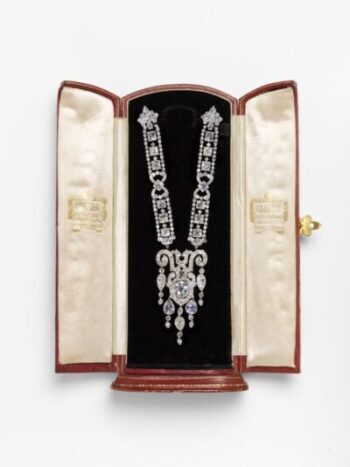
The Edwardian Period (1901-1914)
Fun fact alert! The Edwardian Era is the last to be named after the ruling British monarch of the time. Although the Edwardian Period overlaps Art Nouveau, each gets treated as its own design period due to their distinctive styles. The Edwardian era, headed by the luxury-loving playboy King Edward V11, was a time of frivolity and wealth. This is especially true for the upper classes, who were often attending balls, dinners and galas. Absolutely a perfect time for showing off beautiful jewels! It was a time when society was at the height of elegance and the jewellery really exemplified this.
Edwardian rings used open wire designs and filigree work was prevalent and fine milgrain settings became popular too. Platinum usage surged due to the metal’s unparalleled strength, enabling jewellers to create delicate and lacy mountings, the finer and more intricate the better. Whilst machine made jewellery was still prevalent for the lower and middle classes, the upper echelons and their jewellers moved back to hand-crafted. Enamelling became immensely popular.
Hand-crafted, well-made individual, rather than mass produced jewellery was back in fashion in the Edwardian era and the style became ethereal and detailed, drawing inspiration from the 18th century. Traditional motifs such as bows, garlands, ribbons and lace and feathers were extremely popular. Edwardian fashionistas particularly loved the intricate style of these delicate-looking pieces.
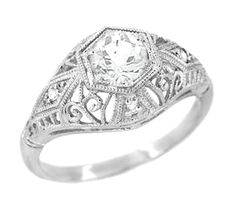
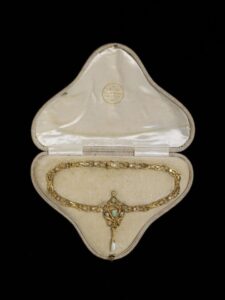
Motifs and symbolism in Edwardian Jewellery
Bows, ribbons, garlands, lace, feathers, and anything fine and fancy was the order of the day!
Gem Cutting Styles and Settings in Edwardian Jewellery
Rose, old mine, and old European cuts were the prevalent cuts of the day, but the baguette cut also gained popularity in this era too.
Rings, as mentioned, were detailed, often with a large smattering of diamonds, typically set in platinum with milgrain and filigree settings. Diamond engagement rings really gained popularity in the Edwardian era. Often with a large diamond in the centre, surrounded by a halo of smaller milgrain set diamonds, alternatively delicate filigree diamond rings, with good finger coverage stretching down the finger.
Necklines were changing, becoming more revealing and lower and therefore draping necklaces were becoming fashionable. Sautoirs, lavaliers and interestingly at the other end of the spectrum, chokers were also popular in this period.
Bracelets were often light with flowery designs and were usually worn alone rather than in a stack.
To complement the lower necklines dangly earrings gained popularity in Edwardian times.
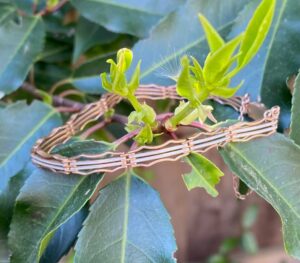
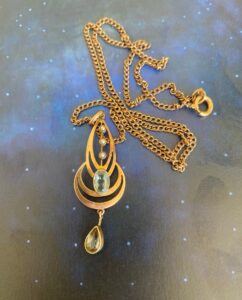
Popular Gemstones in Edwardian Jewellery
Diamonds were used extensively, however interestingly during the Edwardian period, pearls were the more highly prized and indeed expensive gem. A big focus was on white/clear jewellery such as the aforementioned and also moonstone, opals, mother of pearl. That’s not to say that other gemstones weren’t used, but they were often only used as accents. For example, peridot, emeralds, sapphires, rubies, especially Burma rubies were in fashion too.
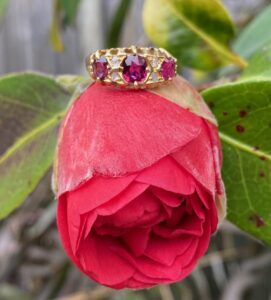
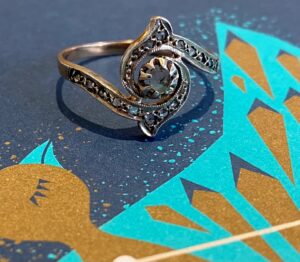
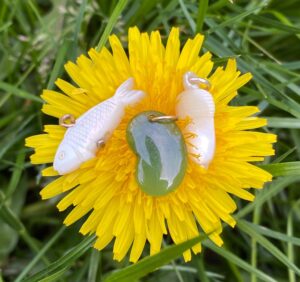
Metals Used in Edwardian Jewellery
White metals were incredibly popular during the Edwardian era, especially platinum as it is so hard and offered great flexibility for detailed work. White gold and silver was also used as well as rolled gold, and high carat gold (especially 18ct) in all colours.
Other Things of Note for Edwardian Jewellery
Jewellery from the Edwardian Period should have a hallmark as this practice of marking jewellery for metal purity, makers marks, region (assay office) was becoming industry standard at the time (though it must be said that some pieces still don’t have the full spectrum of hallmarks). For UK jewellery the hallmarks are usually placed on the inside of the ring. In other countries the marks may be present on the outside, e.g., French hallmarks are often found outside on the band.
Further Resources for Edwardian Jewellery
- Starting to Collect Antique Jewellery – John Benjamin
- Edwardian Fashion – Daniel Milford-Cottom
- GIA – Edwardian Era Jewellery
For our range of Edwardian Jewellery please visit here, we update our stock all the time, so please visit again!
